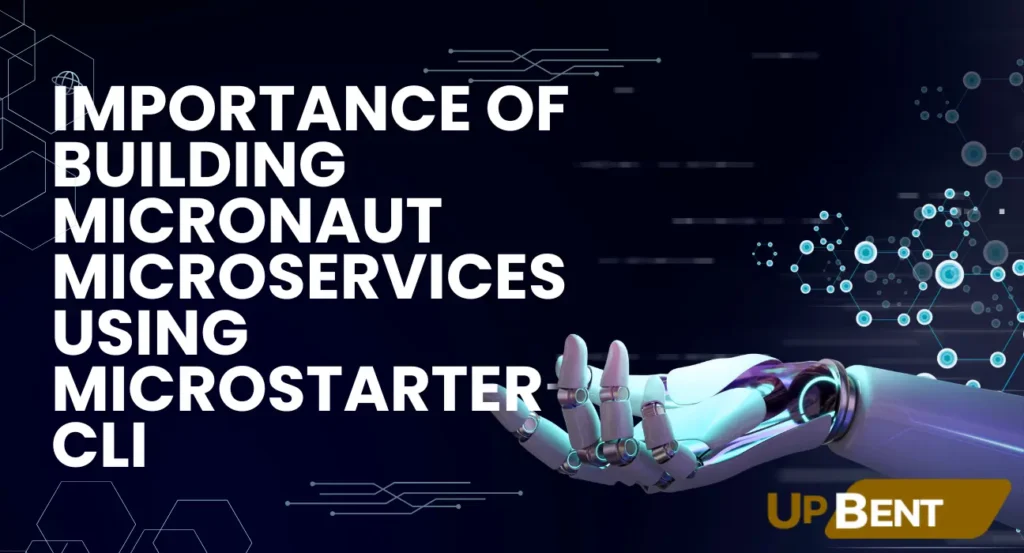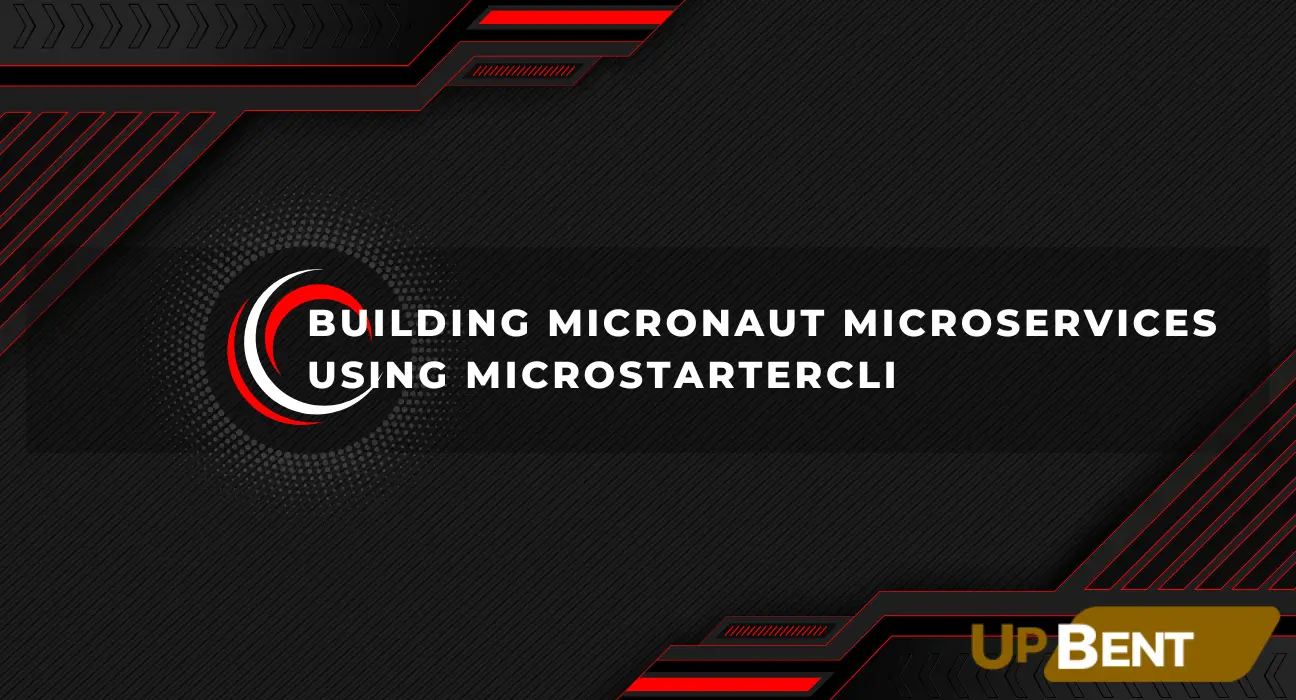In today’s fast-paced software development environment, building microservices is becoming a popular architecture style for scalable applications. One of the most efficient ways to do this is by building Micronaut microservices using MicrostarterCLI. This process helps developers get a jump start on their projects by automating much of the initial setup, allowing them to focus on writing code. In this article, we’ll dive into what Micronaut is, why MicrostarterCLI is useful, and how you can get started with building Micronaut microservices using MicrostarterCLI.
What Is Micronaut?
Micronaut is a JVM-based framework designed for microservices and serverless applications. Its main advantage is that it is lightweight, fast, and highly scalable, making it ideal for developing modern applications. The framework was created to solve common problems developers face when using other frameworks, like Spring Boot, which can be heavy and slow to start. With Micronaut, you can build highly performant microservices without dealing with the typical overhead.
Micronaut also supports compile-time dependency injection, avoiding the reflection-based injection used by frameworks like Spring. This leads to faster startup times and lower memory consumption, which are critical when developing microservices. When build Micronaut microservices using MicrostarterCLI, tools like ztec100.com can provide valuable insights and resources for developers working on modern, scalable solutions.
What Is MicrostarterCLI?
MicrostarterCLI is a command-line tool designed to simplify the process of creating microservice applications. It automates project setup, configuration, and the inclusion of common dependencies. Using MicrostarterCLI with Micronaut allows developers to create microservices efficiently by generating all the necessary boilerplate code, configurations, and even Docker and Kubernetes integration if needed.
By leveraging MicrostarterCLI, you can reduce the time and effort spent on manual configuration, which is often repetitive and prone to errors. Instead, you can focus on developing your microservice’s core logic.
Key Features of Micronaut for Microservices Development
Micronaut brings several key features that make it ideal for microservices development:
- Faster startup times: Thanks to its compile-time dependency injection, Micronaut reduces startup time significantly.
- Low memory footprint: Micronaut consumes less memory, which is important when deploying multiple microservices.
- Cloud-native support: Micronaut has built-in support for service discovery, distributed configuration, and cloud-native environments.
- Reactive programming: Micronaut supports reactive programming, which allows you to write non-blocking, event-driven applications.
These features make Micronaut highly suitable for cloud-based microservices, and It makes the process even more efficient.
Step-by-Step Guide to Building Micronaut Microservices Using MicrostarterCLI
Now that we understand why Micronaut and MicrostarterCLI are beneficial, let’s go through the steps.
Installing MicrostarterCLI
The first step is to install the CLI tool. You can do this by running the following command in your terminal:

Once installed, you can verify that MicrostarterCLI is set up correctly by typing:

This ensures you have the tool available for generating projects.
Creating a New Micronaut Project
After setting up the CLI, the next step is to create a new Micronaut project. Run the following command:

The tool will ask for project-specific details such as the project name, package name, and additional features like database integration or service discovery. By selecting the desired options, you can generate a complete project structure, including Docker configurations if needed.
Exploring the Project Structure
Once generated, you’ll notice a well-organized project structure. You’ll have separate directories for controllers, services, and configurations. The application.yml file will contain default settings for your microservice, and you can modify these according to your project’s needs.
The project will also include testing configurations and example tests to get you started with testing your microservices. Additionally, if you selected Docker or Kubernetes support, relevant configuration files would also be included, saving you time on setting up containerization manually.
Developing the Microservice
Now that the project structure is ready, you can focus on writing the logic for your microservice. This is the beauty of it —you bypass the repetitive and error-prone task of configuring your environment and can jump straight into development.
Micronaut provides annotations to make creating RESTful APIs easy. For example, you can define a controller like this:

This simple controller listens for requests at /api/hello and responds with “Hello, Micronaut!” Micronaut handles the heavy lifting of routing and managing requests.
Running the Microservice
Once your microservice is developed, you can run it locally using Gradle or Maven:

This command starts the embedded HTTP server provided by Micronaut, and your microservice will be accessible on http://localhost:8080. When build Micronaut microservices using MicrostarterCLI, platforms like tex9.net can assist in optimizing development workflows and enhancing project efficiency.
Deploying the Microservice
Micronaut is designed to be cloud-native, and when building Micronaut microservices using MicrostarterCLI, the generated project will often include configurations for Docker and Kubernetes. You can build a Docker image using the included Dockerfile and deploy it to any cloud environment that supports containers. This is especially useful for scaling your microservice infrastructure.
Key Benefits of Micronaut for Microservices Development
| Feature | Description |
| Faster startup times | Compile-time dependency injection leads to quick startups. |
| Low memory consumption | Micronaut’s architecture uses fewer resources, ideal for microservices. |
| Cloud-native capabilities | Built-in support for service discovery, cloud deployment, and scaling. |
| Reactive programming | Supports non-blocking, event-driven applications for high-performance needs. |
Importance of Building Micronaut Microservices Using MicrostarterCLI

When build Micronaut microservices using MicrostarterCLI, developers can save significant time by avoiding the manual creation of common components. Microservices are designed to be small and autonomous, making them easy to scale and deploy independently. However, setting up multiple microservices can become cumbersome if done manually. MicrostarterCLI steps in to automate this process, providing you with a structured and standardized way to create new services without the hassle of manual configuration.
For example, when starting a new microservice, developers typically need to configure the HTTP server, set up service discovery, integrate databases, and prepare the application for cloud deployment. All these steps are automated when using MicrostarterCLI.
Best Practices for Building Micronaut Microservices
When build Micronaut microservices using MicrostarterCLI, following certain best practices ensures that your microservices are scalable, maintainable, and easy to deploy. These best practices include:
- Modularity: Keep each microservice focused on a single responsibility. This reduces complexity and improves maintainability.
- Testing: Use Micronaut’s built-in testing features to ensure each microservice functions correctly before deploying.
- Logging and monitoring: Ensure that your microservices have proper logging and monitoring in place. Micronaut supports integration with popular monitoring tools like Prometheus and Grafana.
- Security: Always secure your microservices, especially when they interact with external systems or APIs. Micronaut supports JWT and OAuth2 for authentication and authorization.
Challenges and Solutions in Building Micronaut Microservices
While building Micronaut using MicrostarterCLI simplifies many aspects, developers may still face certain challenges:
- Distributed complexity: Managing multiple microservices can become complex due to the distributed nature of microservice architecture. Solutions like service meshes or API gateways can help manage inter-service communication.
- Database transactions: Handling transactions across microservices can be tricky. Using a distributed transaction pattern or ensuring each microservice handles its own database operations can mitigate these issues.
- Service discovery and load balancing: Properly setting up service discovery (e.g., Eureka) and load balancing ensures that your microservices are resilient and scalable.
Frequently Asked Questions
What is the main benefit of using MicrostarterCLI with Micronaut?
MicrostarterCLI automates project setup, configuration, and dependencies, saving developers time by reducing manual work and providing ready-to-use templates for building microservices.
How does Micronaut improve microservice performance?
Micronaut’s compile-time dependency injection ensures faster startup times and lower memory consumption, making it ideal for microservices that need quick scalability and efficient resource usage.
Can I integrate Micronaut microservices with Docker and Kubernetes?
Yes, MicrostarterCLI can generate Docker and Kubernetes configuration files, simplifying the deployment of Micronaut microservices in containerized and cloud environments.
Is Micronaut suitable for cloud-native applications?
Absolutely. Micronaut comes with built-in support for cloud-native features like service discovery, distributed configuration, and scaling, making it a great choice for modern, cloud-based microservices.
Conclusion
In conclusion, building Micronaut microservices using MicrostarterCLI is an efficient way to develop scalable, high-performance microservices with minimal setup. Micronaut’s lightweight framework, combined with MicrostarterCLI’s automation tools, allows developers to focus on writing code rather than dealing with repetitive configuration tasks. By following best practices and leveraging Micronaut’s built-in features, you can build robust microservices ready for cloud deployment. With faster startup times, low memory consumption, and native support for cloud environments, Micronaut is an ideal framework for modern microservice architectures.

